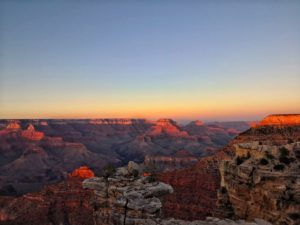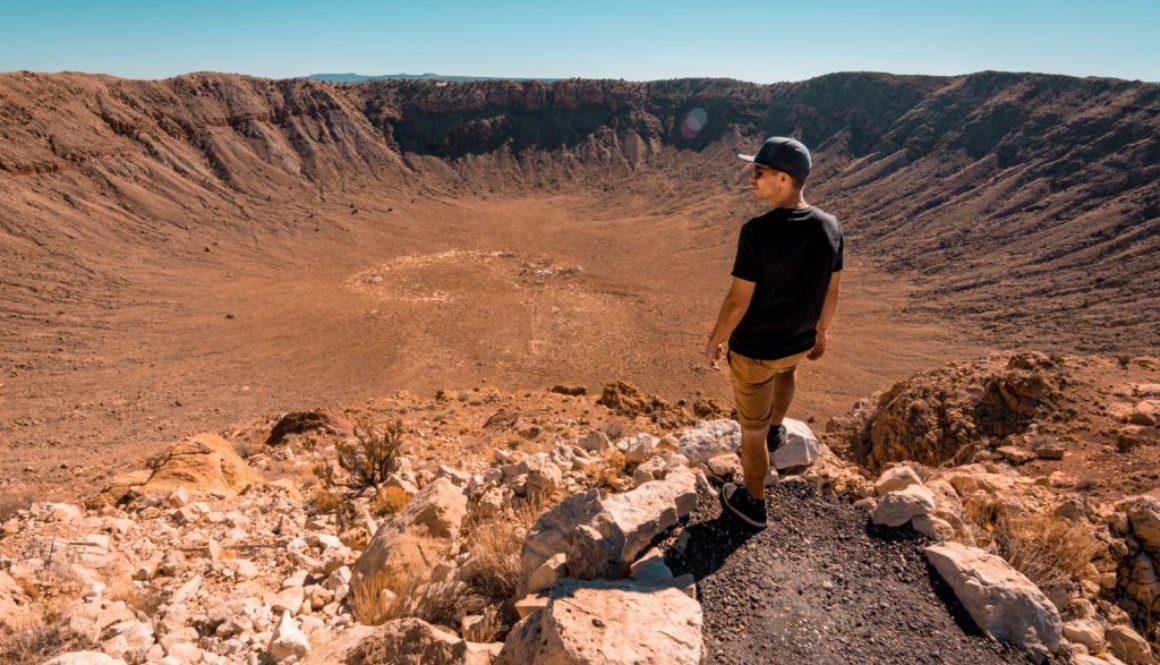5 Natural Wonders Sharing Earth’s History

Gaping canyons, giant crystals, prehistoric fossils… These are just a few examples of the natural world that cause us to stop and stare in awe. The sight of these natural features is usually so beautiful or odd that we simply forget to ask a simple question – Why is this here?
The Earth has undergone quite a bit of activity in its 4.5 billion year history, and many natural wonders exist to tell us about it. Five of the world’s most well-known natural wonders are mentioned here and are sure to make you feel very small in a big world.
Explosion of Arizona Meteor Crater
A low ridge feature exists in central Arizona that seems obscure from a distance. However, from the top of the ridge, a giant circular mile-long chasm reveals itself. This giant crater was formed during the last ice age by a meteor impact.
As large as the impact site appears, it is actually small in comparison to other known craters in our solar system. The asteroid that caused the crater was only 150 feet across. It collided with the Earth at a speed of around eight miles per second, causing an explosion equivalent to 10 megatons of TNT. That’s equivalent to more than 600 times the energy of the Hiroshima bomb.
Many asteroids have impacted the Earth over time. However, the Arizona Meteor Crater is one of the best preserved craters. This is due to its relatively young age and protective dry climate.

Strange Columns of Giant’s Causeway
On the north shores of Ireland, an accumulation of manmade looking columnar rocks step into the sea. Each of the 40 thousand rock columns has either five or six sides to form pentagonal or hexagonal shapes. They pack together so tightly that they form a kind of pavement, or a causeway like their name suggests.
These rocks are not manmade though. They are natural and formed from a deep lava flow 100 million years ago. During the Cretaceous period, great tectonic change was taking place within the planet. The supercontinents of Gondwana and Laurasia were breaking apart to form the opening for the present-day Atlantic Ocean.
Fissures in the crust allowed basalt lava to pour onto the surface from deep within the Earth. As the lava cooled, it contracted uniformly and cracked into the pentagonal and hexagonal columns we see today.
Burgess Shale Rare Fossil Site
The Canadian Rocky Mountains host the site of a thick layered rock formation called the Burgess Shale. This rock contains fossils from organisms that lived 500 million years ago. This period of time is known as the ‘Cambrian Explosion’ and marks when most major animal groups appeared in the fossil record.
The mountainous area of today is the site of an ancient sea where these organisms lived. As the organisms died and fell to the seafloor, surrounding sediment accumulated and compressed the organisms into fossils.
Many sites exist around the world containing Cambrian fossils. The Burgess Shale is special because it contains much more rarely preserved soft-bodied organisms where other sites contain only hard-bodied organisms. The wider variety of organisms provides a much clearer marine life record.
Harsh Environment of Giant Crystal Cave
About 1,000 feet below the ground near Chihuahua, Mexico is a cave with numerous giant crystals large enough to walk across. Some of the crystals have grown to 36 feet long! These huge crystals have been growing uninterrupted for at least 500 thousand years.
The crystals formed when underground water pushed into the cave from deep magma. This water was a scalding 136 degrees Fahrenheit and contained a mineral called anhydrite. When the water temperature cooled only very slightly, the anhydrite mineral began breaking down to form selenite crystals. These grew larger through time to their present size.
The cave was only discovered in the year 2000 during mining operations when water inside the cave had finally receded. With such high temperatures and 99 percent humidity, cavers had to be properly protected or they would only live for 10 minutes with such inhospitable conditions. In 2015, the cave flooded with water again and is no longer accessible.

Grand Time Scales of Grand Canyon
The Grand Canyon is perhaps the most well-known natural wonder. It attracts more than 5 million visitors per year. Spanning 277 miles long, 18 miles wide, and having a depth of more than a mile, northern Arizona contains one of the largest canyons in the world.
The igneous and metamorphic rocks of the canyon’s inner gorge began forming almost two billion years ago, and younger layers of sedimentary rocks deposited on top. Later, the entire area was uplifted from tectonic plate movement to form the Colorado Plateau.
Finally around five million years ago, the Colorado River began to cut down into the plateau of rock. The river kept cutting down and widening the canyon into what it is today. In total, around 1.7 billion years of Earth’s history is exposed in the canyon walls.
These are some of the most well-known natural wonders of our world. Each one has a distinctly different story to tell about Earth’s history. What are the geologic stories behind other natural wonders? Do you have a natural wonder in your own backyard?
Find out some of Earth’s biggest unsolved mysteries here.


